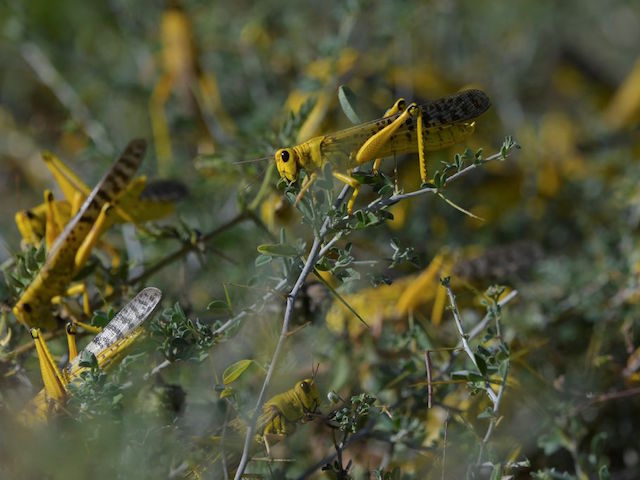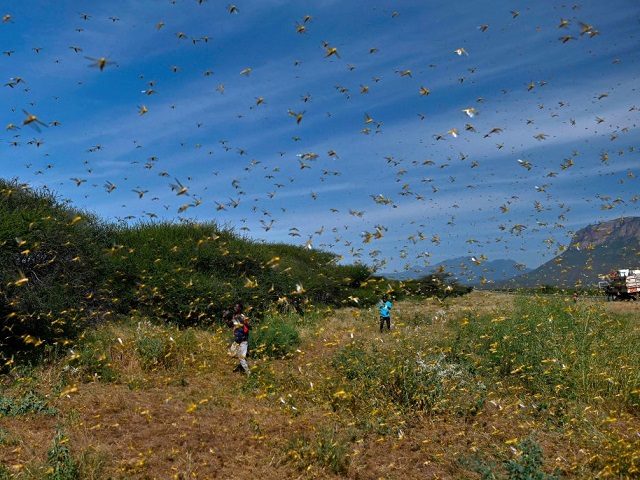East Africa, which has so far been spared the worst of the Chinese coronavirus pandemic, is facing its own life-threatening plague as hundreds of billions of locusts swarm, destroying crops and livelihoods.
In what is being called the worst infestation for a quarter of a century, “extremely alarming” swarms of Desert Locust (Schistocerca gregaria) have been forming in the Horn of Africa, ready to descend upon Kenya, Ethiopia, Somalia, Iran, Pakistan, and Sudan, according to Locust Watch, part of the Food and Agriculture Organization (FAO) at the United Nations.
Each locust eats its own body weight in food every day, and the swarms are breeding so fast that numbers could quadruple by June, according to estimates.
“A typical desert locust swarm can contain up to 150 million locusts per square kilometer,” said the Intergovernmental Authority on Development (IGAD). “Swarms migrate with the wind and can cover 62 to 93 miles in a day.”

Gregarious locusts congregate on some ground vegetation at Larisoro village near Archers Post, on January 21, 2020. – The outbreak of desert locusts, considered the most dangerous locust species, is significant and extremely dangerous warned the United Nations Food and Agriculture Organisation ,Monday, describing the infestation as an eminent threat to food security in months to come if control measures are not taken (TONY KARUMBA/AFP via Getty Images)
Locust Watch said that the threat to food security and livelihoods at the beginning of the upcoming cropping season is “unprecedented.” The last time the region experienced a similar danger from locusts was during 1987-89.
In January, the UN already appealed for $76 million to address the brewing crisis but now that figure has risen to $138 million.
The desert locust “is the most destructive migratory pest in the world,” Locust Watch declares, and swarms can mushroom into millions of insects “with the capacity to consume the same amount of food in one day as 35,000 people.”
Analysts have noted that food shortages caused by the locust swarms may trigger even more violence in politically unstable areas, such as Somalia and South Sudan.
“There is nothing left to harvest. And there is nothing else that I know how to do. It’s just this farm. That’s where I get food, where I feed my family and friends, all people,” one Kenyan farmer said in late February.
The FAO has predicted that from March through June 2020 the locust swarms could increase by up to 400 percent in some locations on the Horn of Africa, which will be especially problematic for areas such as Kenya, which are not used to handling locust infestations.

COMMENTS
Please let us know if you're having issues with commenting.